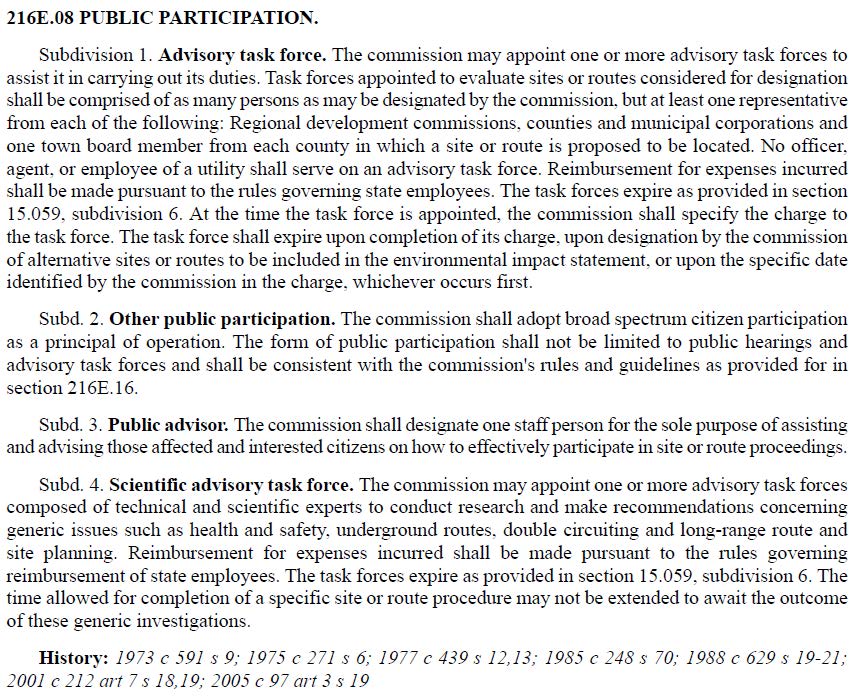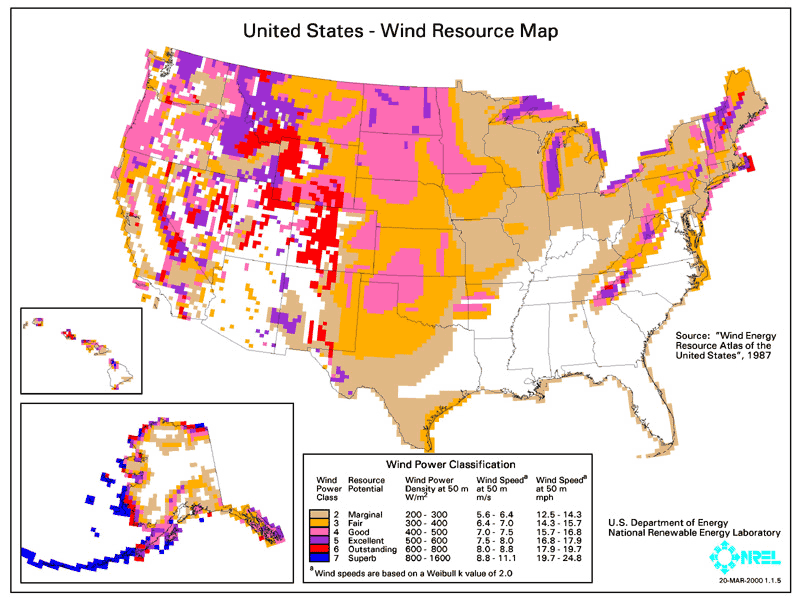Freeborn Wind Responds & AFCL Replies!
October 5th, 2017

Oh my, seems that Association of Freeborn County Landowners has struck a nerve. Freeborn Wind Energy (Invenergy) has responded:
Here’s the Response of AFCL to that Reply:
Reply_Association of Freeborn County Landowners_Petition for Task Force
There are some pretty wild statements, attributing motives and purposes that are off the wall:
- Apparently, aware that a task force could not meet its traditional statutory duties, AFCL argues for the creation of a new purpose — that such task force should be appointed to help resolve contested factual issues. Response, p. 7.
- AFCL appears to be seeking and Advisory Task Force that would persist through the contested case proceeding. Response, p. 8.
- AFCL’s request for a Scientific Advisory Task Force is, quite transparently, a second try to commence a rulemaking relating to wind turbine noise. Response, p. 8.
Oh my… Here’s the statute, and a review of that demonstrates that the first two of their presumptions are contrary to law, and ya know, there are some lawyerly rules (Rule 11 anyone?) against those types of arguments misrepresenting the law:

“AFCL argues for the creation of a new purpose?” No. The only purpose specified in the statute, but stated in a way that leave it open to other purposes, is one of “evaluating sites.” That’s in the second sentence of Subd. 1. What typically happens in a task force is that the application is reviewed, members comment on it and raise issues and proposed additional options. That’s called informing the record. That’s what task forces do, contribute their first hand knowledge of their community, and use that to evaluate sites, to propose alternate sites (which should be in the application but are not!). The charge is to be specified by the Commission.
“Persist through the contested case proceeding?” After the Chisago I task force, which intervened in the first Chisago contested case, Northern States Power made sure that wouldn’t happen again, and in 2001 pushed to get language into the statute that did exactly that:
The task force shall expire upon completion of its charge, upon designation by the commission of alternate sites or routes to be included in the environmental impact statement, or upon the specific date identified by the commission in the charge, whichever occurs first.
Minn. Stat. 216E.08, Subd. 1. DOH! No way can the task force “persist.”
“AFCL’s request for a Scientific Advisory Task Force is, quite transparently, a second try to commence a rulemaking relating to wind turbine noise.” No. I’ve filed a lot of rulemaking petitions over the years, and even more petitions for task forces. With the 2016 petition to the MPCA for rulemaking on wind noise, the Commissioner said that there wasn’t sufficient “understanding of wind turbine noise and its potential effects” for rulemaking:

Soooooooo, if there is insufficient understanding, how do we build that understanding to the point its sufficient to support rulemaking, how do we “monitor the science” for a decision regarding future rulemaking? Yes, seems to me this is what a Scientific Advisory Task Force is for! And it’s my belief that the last time this was done was the Stray Voltage report from the “Science Advisors”back in the ’90s, appointed by the Public Utilities Commission to consider stray voltage:
This report came up several times in the Arrowhead Transmission Dockets in Minnesota and Wisconsin, and was not at all helpful in advancing understanding of stray voltage, that took a few successful plaintiffs, like Zumberge and Cook in Minnesota, but this is a way to develop the record. Worth noting is that this Science Advisors report was before Freeborn Energy’s attorney Lisa Agrimonti’s time… though I know Mike Krikava would remember!
I have a rulemaking petition for both Minn. R. Ch. 7030 and Ch. 7854 on deck, but as far as I can see, nothing has changed in MPCA’s “understanding” of wind noise and impacts on human health. We need to get the information into the system somehow. A Scientific Advisory Task Force — that is why this statute was created, that’s the purpose! DOH!
The Response of Freeborn Wind Energy has zero credibility. Did they make these arguments up while sitting around the bar after the Line 3 hearings last week? Good grief…
Bent Tree Wind Farm Noise Monitoring Report
October 2nd, 2017

On April 12, 2017, the Public Utility Commission ordered noise monitoring for the Bent Tree Wind Project after numerous complaints pressured for action on those complaints. Bent Tree is located in Freeborn County just north east of Albert Lea, Minnesota, north of Interstate 90, and on the west side of Interstate 35, opposite where they now want to put up the Freeborn Wind Farm, south of I-90 and east of I-35. They put up monitors at a few locations near the homes of those who filed complaints, and then, for some reason the turbines near those homes are off (Curtailment? Why am I suspicious? Apparently they’ve never been off at other times.). Then they took the monitors away.
But the study is “complete?” Here it is.
On page one, the cover letter, they admit there are times of non-compliance. What’s important in this is that the problematic “noise” is the infrasound, which is found in “C weighted” scales, and not the “A weighted” scale that is the subject of Minn. R. 7030. Further, the Minnesota Rules Ch. 7030 does not address impulsive sounds, such as sounds from a gun range, or some sound from wind turbines.
| 7030.0010 | INCORPORATION BY REFERENCE. |
| 7030.0020 | DEFINITIONS. |
| 7030.0030 | NOISE CONTROL REQUIREMENT. |
| 7030.0040 | NOISE STANDARDS. |
| 7030.0050 | NOISE AREA CLASSIFICATION. |
| 7030.0060 | MEASUREMENT METHODOLOGY. |
| 7030.0070 | SOUND ATTENUATION MEASUREMENT METHODOLOGY. |
| 7030.0080 | VARIANCE. |
MPCA’s Commissioner, John Linc Stein, agrees that the Minnesota Rules do NOT cover infrasound, and there are no rules covering infrasound, but yet will not initiate rulemaking:

WHAT!?!?!?!
Back to the studies. the protocol for the “study” is taken from the Minn. R. Ch. 7030, Measurement Methodology. Monitoring data was excluded if the wind speed was over 11 mph, but for the Langrud monitor, the report says that wind speed was not over 11 mph. Is that reasonable? Look at average wind speeds generally, considering that higher wind speed is desirable for generating electricity (click for larger version):
When wind speeds are high, that is when the noise from the turbines is most unbearable, and under the report protocol, when wind speeds are high, were excluded. Average wind speed n the Bent Tree area is 15.7 – 16.8. So in the chart above, it says 0% were excluded due to high wind. Does that mean there were no times that the wind was over 11 mph? That’s doubtful, although spring and fall are times with higher wind, typically, but, color me skeptical.

But yet Table 4-1 says wind speed did not go over 11 mph during the monitoring, and so no data where wind was over 11 mph was excluded. Curtailment is also unclear, because we do not know what turbines were curtailed, if it was only ones near the monitors, or the entire project (usually is is some but not all). It also says results were skewed by bird chirping and insect noise, which would not have been present in early spring or fall. WHAT?!?! And early spring is planting time so lots of farm equipment out, and fall is harvest. Makes no sense.

So how is the report valid?
Dave Langrud, a landowner in the Bent Tree footprint, has tracked when the turbines were off and on, and we’re working on comparing those times to the times in the report — they do have some info in this report for comparison showing time they admit the turbines were off:

And there were C weighted measurements, note how high these go:

We’ve submitted a Data Practices Act Request for more data:
Nothing has showed up yet.
